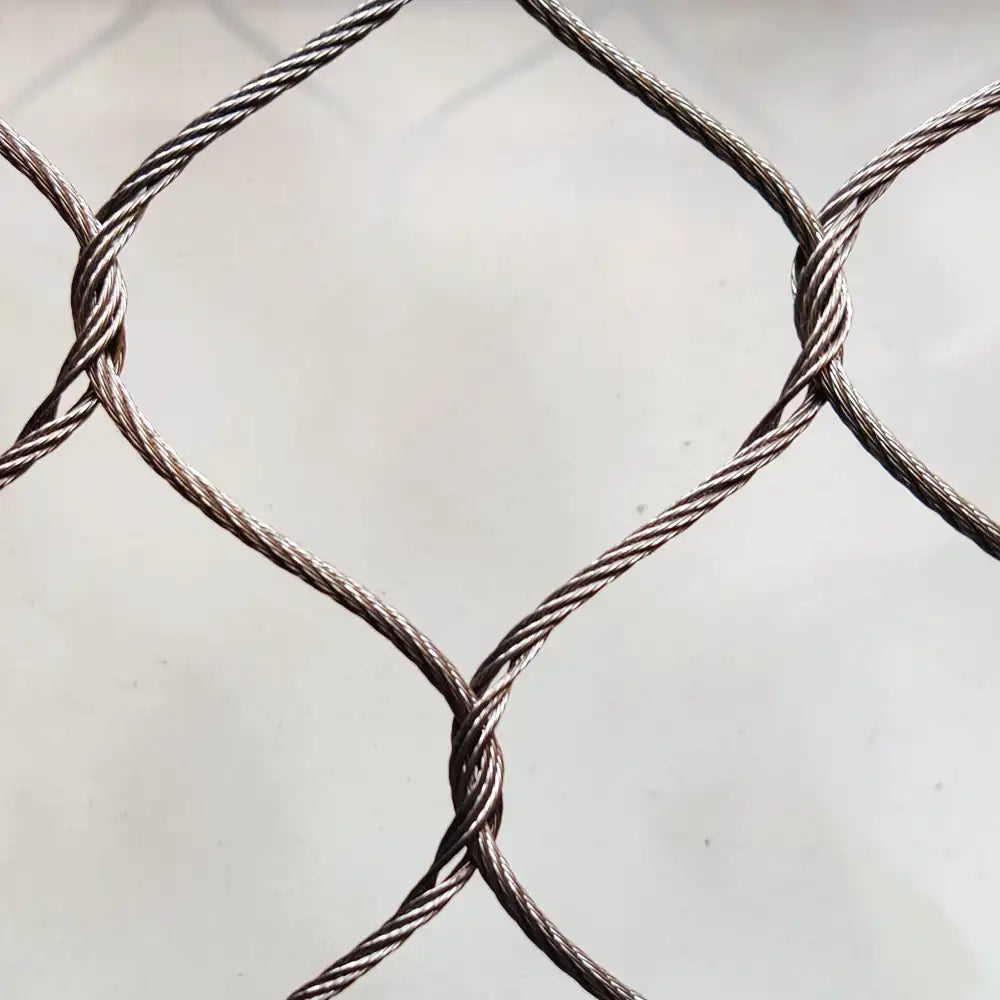How to determine the bearing capacity of stainless steel rope mesh?

The determination of the bearing capacity of stainless steel rope mesh requires comprehensive consideration of the following aspects:
1. Materials and Specifications: - The type of stainless steel, such as 304, 316, etc. Different types have different strengths. - The thickness of the rope diameter. Generally, the thicker the rope diameter, the stronger the bearing capacity. - The size and shape of the mesh also affect the bearing capacity. Smaller and regular meshes usually provide better support. For example, a rope mesh made of 316 stainless steel with a rope diameter of 5mm usually has a higher bearing capacity than one made of 304 stainless steel with a rope diameter of 3mm.
2. Manufacturing Process: - Weaving method: Different weaving methods affect the structural stability and bearing capacity of the rope mesh. - Processing accuracy: Such as the firmness of the node connection, etc. For instance, a stainless steel rope mesh with tight weaving and firm node connection has a relatively high bearing capacity.
3. Test Reports and Certifications: - Professional test reports provided by suppliers. These reports usually contain bearing capacity data under specific conditions. - Relevant quality certifications, such as ISO certifications, can also reflect the quality and bearing capacity of the product to a certain extent.
4. Calculation and Simulation: - The bearing capacity of the stainless steel rope mesh can be estimated through mechanical calculations. - Computer simulation software can be used to simulate the deformation and stress distribution of the rope mesh under different loads. Suppose a stainless steel rope mesh of a specific size and specification, its maximum weight-bearing capacity can be obtained more accurately through calculations and simulations.
5. Practical Application Cases and Experience: - Refer to the bearing conditions of stainless steel rope meshes used in similar projects. - Consult experienced engineers or industry experts.For example, the successful experience of a stainless steel rope mesh used in the enclosure of large animals in a zoo can be used as a reference.
6. Field Testing: - Conduct small-scale field tests before installation or under specific conditions to directly measure its bearing capacity. However, field testing requires professional equipment and operation, and the cost is relatively high. To sum up, by comprehensively analyzing various factors such as material specifications, manufacturing process, test reports, calculation simulations, practical cases and field tests, the bearing capacity of stainless steel rope mesh can be determined relatively accurately.
 Stainless Steel Cable Nets: The Ultimate Solution for Modern Zoo Enclosures
Stainless Steel Cable Nets: The Ultimate Solution for Modern Zoo Enclosures
 Monkey Mesh & Monkey Enclosure Mesh: Ultimate Guide to Safe, Durable Enclosures (2026)
Monkey Mesh & Monkey Enclosure Mesh: Ultimate Guide to Safe, Durable Enclosures (2026)
 What are the key considerations when constructing a large birdhouse?
What are the key considerations when constructing a large birdhouse?
 How to Build a Safe and Durable Large Aviary with Stainless Steel Rope Mesh
How to Build a Safe and Durable Large Aviary with Stainless Steel Rope Mesh